5 Best Bodyweight Exercises for Calves (with Pictures!)
The majority of bodyweight calf exercises will involve producing frequent recruitment of the lower body’s musculature with high volume sets, most often in a directly vertical angle of resistance.
Exercises that fit into this category can range from the slow and heavy calf squat to the high-tempo and high-intensity classic that is the jump rope.
How are the Calves Trained With Only Bodyweight Exercise?
Training any skeletal muscle with bodyweight alone is somewhat more complicated than with other types of resistance training, as it will require the usage of training volume division, proper maintenance of tension in the muscles, and advanced exercise knowledge to truly take advantage of.
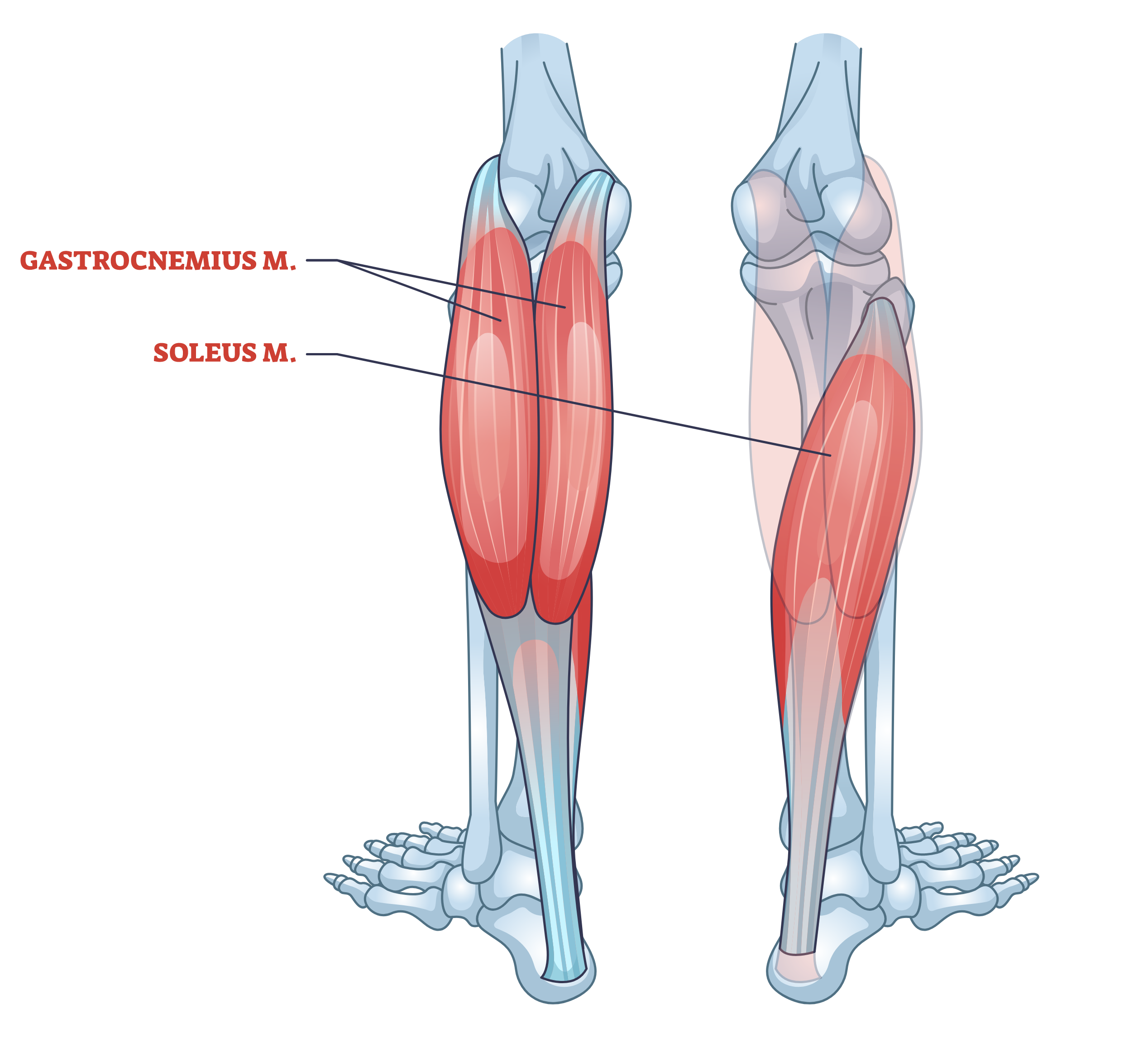
Fortunately, with a few simple things to keep in mind, any individual can grow the muscles of their calves with no equipment whatsoever.
Volume and Progression
The main source of training stimulus with bodyweight calf exercises will come from repeated contraction under tension, rather than a significant amount of resistance.
While this is more time-consuming and may lead to greater fatigue over time, it nonetheless allows a clear and highly effective way of growing the calf muscles without the need for resistance training equipment.
In terms of progression, bodyweight exercisers may either add further volume per set, or switch out their chosen exercise with a more complex and difficult progression exercise.
The majority of the following exercises are meant to be performed in sets of no less than 10-12 repetitions each, often for multiple sets with a high tempo between each repetition and a focus on full contraction of the calf muscles through their entire range of motion.
Tempo, Time Under Tension, and Exercise Selection
While volume is the main source of muscular growth for the majority of bodyweight calf exercises, such volume will be rendered ineffective without maintaining the correct tempo with each repetition, as well as ensuring that sufficient tension is kept over the course of said tempo.
These factors will differ between exercises, but it can generally be said that each repetition is meant to be performed in a controlled manner, and with the exerciser focusing on working the muscles of the calves from one end of their range of motion to the other.
Benefits of Bodyweight Exercises for the Calves
It should come as no surprise that training the calves with exercise will result in bigger and stronger calves. However, in addition to said muscular effects, there are several other benefits that also come as a result of these exercises, many of which may also be overlooked.
Athletic Carryover
The calves are involved in nearly all forms of athletic activity, as they govern not only movement of the feet, but can also take part in stabilizing and controlling any movement involving the lower body as well.
What this means is that training the calves with bodyweight exercises will lead to a direct improvement in an individual’s capacity to perform athletic activities, especially those directly involving the lower body like sprinting or jumping.
High Caloric Expenditure
The majority of bodyweight calf exercises are performed at a high tempo, and for a high amount of volume per set. Activity performed in such a manner will undoubtedly lead to a higher heart rate, and therefore greater caloric expenditure as a result.
When combined with proper dieting, regularly performing bodyweight calf exercises can contribute greatly to a weight loss regimen.
Reinforcement of Ankle and Foot Biomechanics
The main function of the calf muscles is to support and initiate the majority of biomechanics relating to the feet and ankles, especially in regards to dorsiflexion and plantarflexion, where the muscles of the soleus and gastrocnemius are utilized to their terminal ranges.
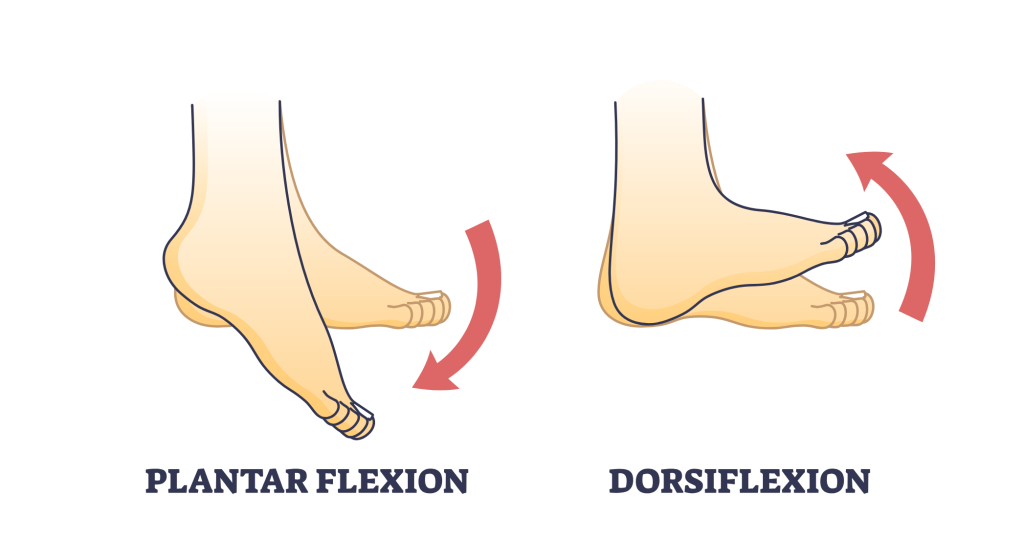
As such, it can be inferred that training the same muscles allows for all related biomechanics to be performed in a smoother and more stable manner.
Bodyweight Exercises for Calves
1. Bodyweight Standing Calf Raises
The first and most commonly-encountered form of bodyweight calf exercise is the standing calf raise, a single-joint isolation exercise performed with the exerciser standing upright.
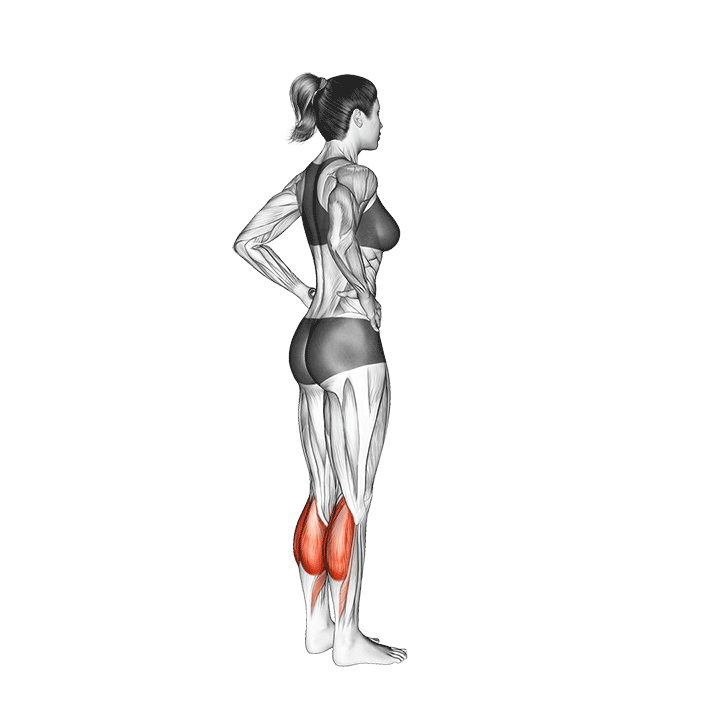
While it does not maximize the range of motion of the calves, it is nonetheless easy and quite effective for pumping out high-volume sets with no equipment available.
Muscles Worked by Bodyweight Standing Calf Raises
As an isolation exercise, the standing calf raise will solely train the muscles of the calves.
In particular, it is the two-headed gastrocnemius that will receive the most benefit from standing calf raises, hence its widespread usage by bodybuilders and those seeking larger calf muscle mass.
Benefits of Standing Calf Raises
As the most simple and readily available bodyweight calf exercise, the standing calf raise is unparalleled in terms of reliability and minimizing the risk of strain or injury.
So long as the movement is performed with correct form, it is entirely unlikely that an exerciser will manage to hurt themselves.
In addition to the safety benefits of the standing calf raise, it is also quite effective at improving the general size and appearance of the calves due to its greater focus on the more superficial gastrocnemius muscle.
How-to Perform Standing Calf Raises
To perform standing calf raises, the exerciser will simply stand upright with their feet close together, toes pointing forward. A wall or similarly stable object may be used for support.
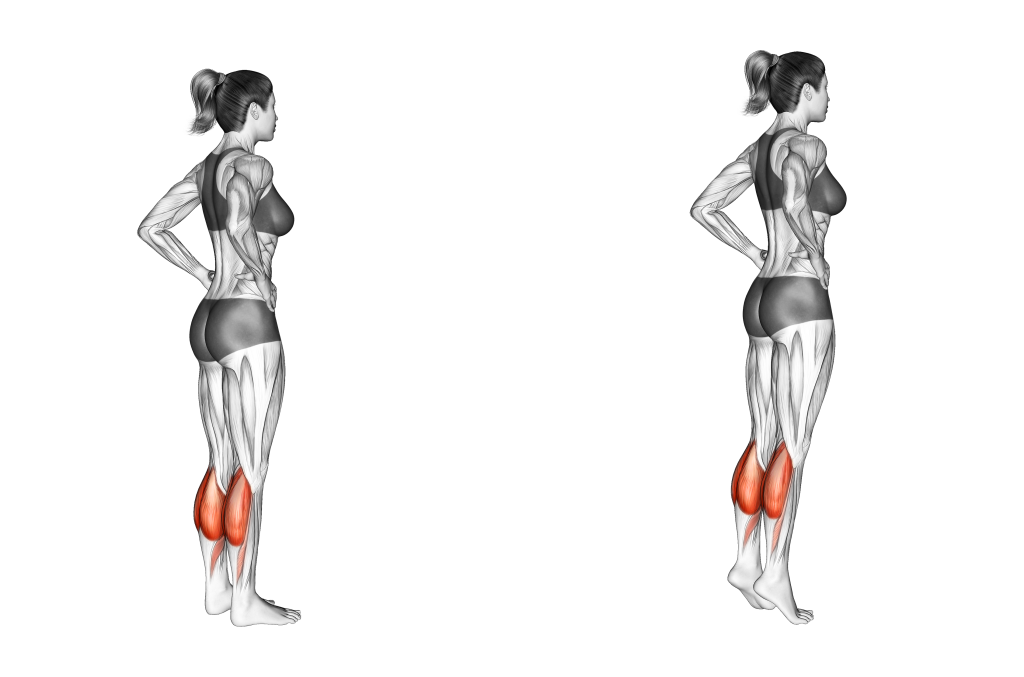
To begin the exercise, they will roll onto the balls of their feet, ensuring that their knees are fully extended so the only moving joints are of the ankles and feet. Holding this position for a moment, they will then return their heels to the ground, thereby completing the repetition.
2. Donkey Calf Raises
Donkey calf raises are a twist on the standard calf raise where, instead of performing the movement standing upright, the exerciser will instead be bent at the hips so as to maximize the range of motion of the calves.
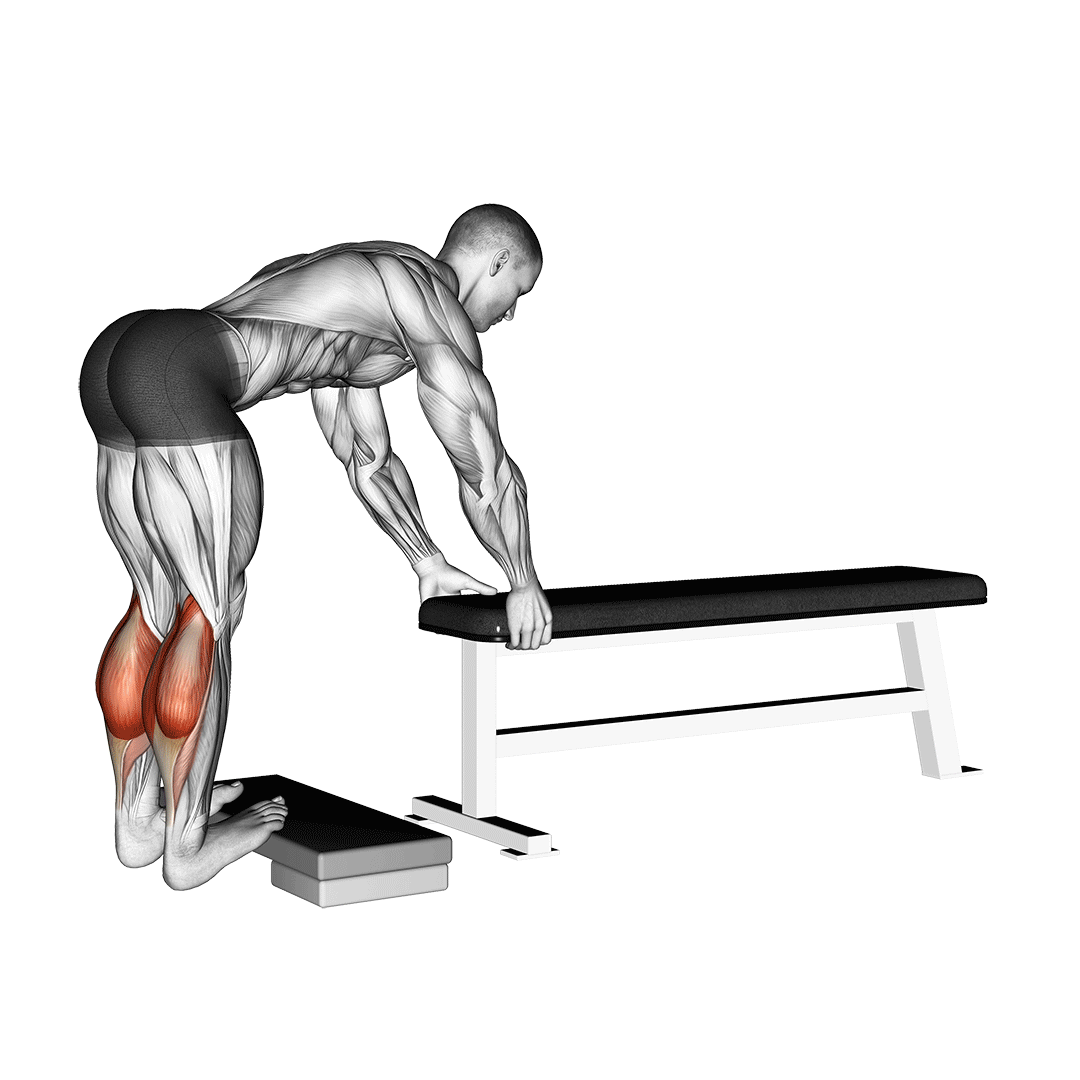
Unlike standing calf raises, donkey calf raises are usually done while the lifter’s heels are hanging off a platform, thereby increasing the eccentric range of motion of the movement by a significant amount.
Muscles Worked by Donkey Calf Raises
Donkey calf raises are an isolation exercise, and will solely train the muscles of the calves.
Benefits of Donkey Calf Raises
As a bodyweight calf raise variation, donkey calf raises are particularly effective for ensuring that the calves are given as much time under tension as possible, thereby maximizing hypertrophy and improving the mobility of the ankles themselves.
On top of that, donkey calf raises are also excellent for building size and definition in the calves, as they place a greater focus on the gastrocnemius muscle that makes up the majority of the calf’s mass.
How-to Perform Donkey Calf Raises
To perform a repetition of the donkey calf raise, the exerciser will place the balls of their feet on an raised platform, bending at the hips as they support themselves by placing their hands on another object.
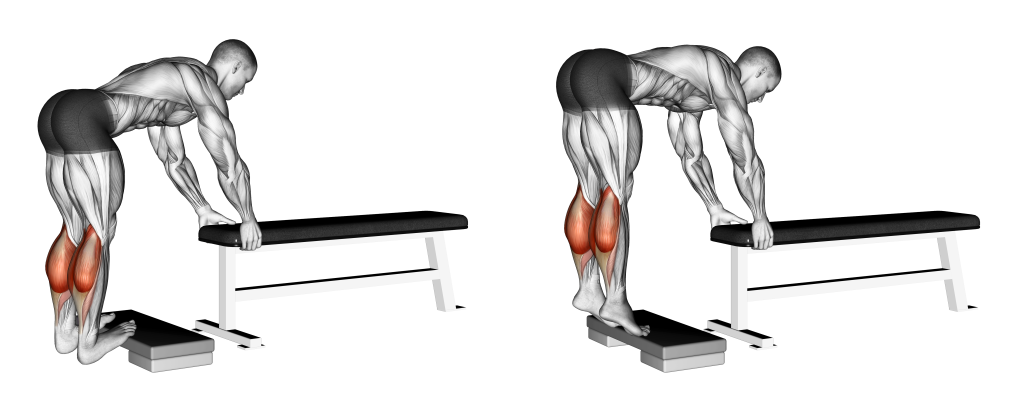
Then, bending the heels downward so as to stretch the calf muscles, they will continue the movement by pushing through the forefoot, stopping once they have reached full extension with the feet and ankles.
From this position, they will then return the heels to their original starting elevation, thereby completing the repetition.
3. Jump Rope
Though not quite a traditional resistance exercise, the jump rope is an excellent way of building up the calf muscles with bodyweight alone.
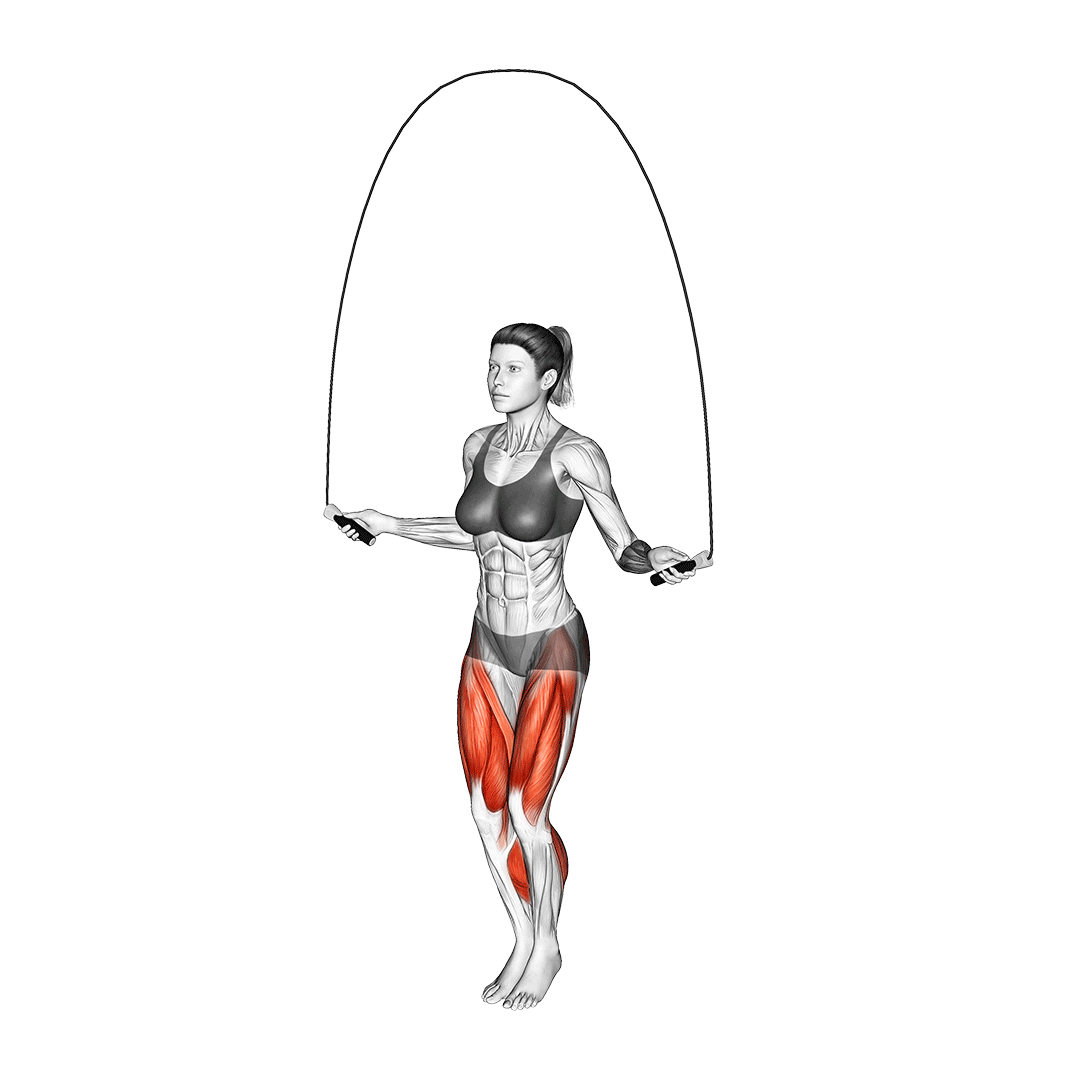
While it is more frequently encountered in athletic training programs so as to build cadence and speed, performing the exercise alongside other bodyweight calf exercises (like the standing calf raise) can help “finish off” the muscle, and burn quite a number of calories as a bonus.
Unlike more traditional calf resistance exercises, using a jump rope can be a whole-body movement, and as such is considered a multi-joint compound exercise with a variable level of intensity.
Note that - unlike other bodyweight calf exercises - this particular one will require a jump rope. Granted, it is possible to "jump rope" by simply mimicking the movement without said equipment.
Muscles Worked by Jump Rope
Using a jump rope will recruit not only the calves, but the quadriceps, glutes, hamstrings and core muscles all in a single highly efficient movement.
Benefits of Jump Rope
Not only will using a jump rope train the muscles of the calves, but it will also result in full-body development as well - even with the circulatory system, as a jump rope workout features both anaerobic and aerobic training stimuli on account of its high intensity.
Apart from the jump rope’s capacity to improve the body as a whole, it is also quite useful as a tool for inducing caloric expenditure and eventual weight loss.
How-to Jump Rope
To use a jump rope for calf training, the exerciser will stand upright with both ends of the rope held in their hands. The rope should be resting behind the exerciser’s legs at the beginning.
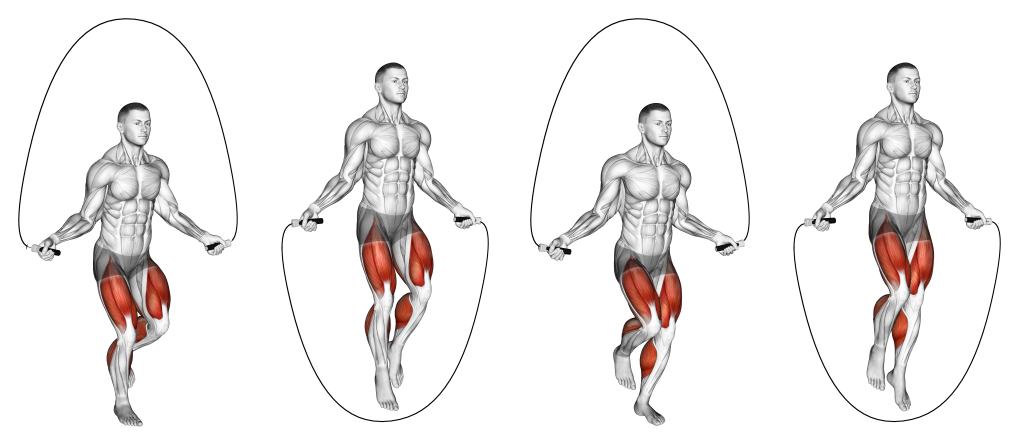
Swinging the rope in an overhead arc, the exerciser will then simply skip over it as it approaches their feet, following the movement up with another swing of the rope so as to continue the exercise.
4. Mountain Climbers
A classic among functional fitness enthusiasts, mountain climbers are an equipment-free way of training the calf muscles while also burning quite a number of calories within a short time-frame.
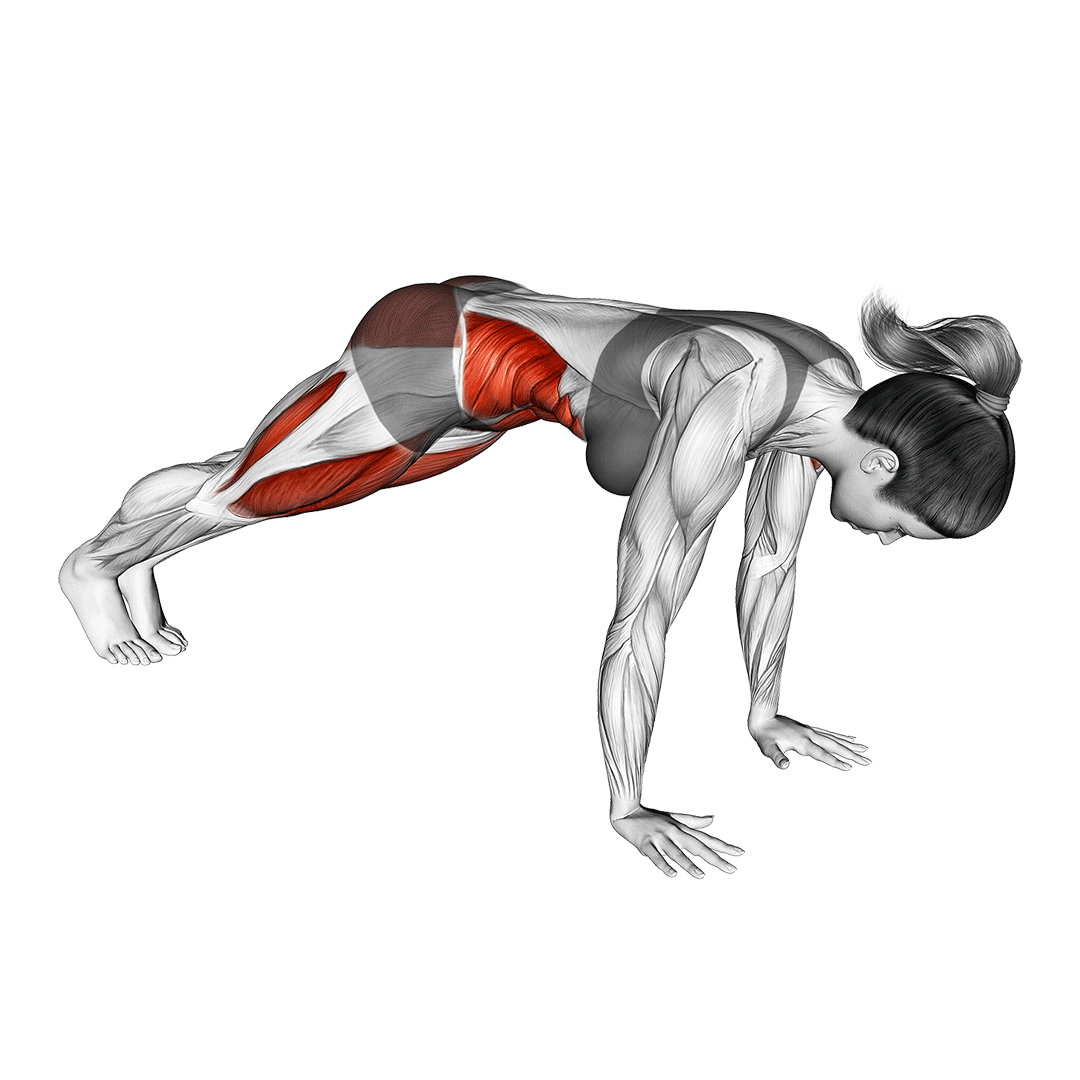
Mountain climbers are an intense multi-joint compound exercise most often performed for their fat-burning capabilities and athletic carryover.
Muscles Worked by Mountain Climbers
As a high-intensity compound exercise, mountain climbers will work not only the calves, but also the core, quadriceps, glutes and hamstrings - all in a highly dynamic manner.
Benefits of Mountain Climbers
Apart from being effective at training the calves in a functional way, mountain climbers are also excellent at building up aerobic endurance and full lower-body power, hence their frequent inclusion into many athletic training programs.
On top of that, individuals wishing to take their weight loss to another level at home will find that mountain climbers are highly effective at burning dozens of calories in a few short sets.
How-to Perform Mountain Climbers
To perform mountain climbers, the exerciser will enter a push-up position with their core engaged and the arms fully extended beneath the torso.

Bending one knee and moving the foot forwards as the other remains extended, the exerciser will then rapidly switch to the opposite leg, returning the first leg to full extension as the opposite knee moves forward.
The exerciser will repeat this motion as many times as needed to complete their set.
5. Calf Squats or Squat to Calf Raises
For a highly intense resistance exercise that targets the calves with as much weight as possible, calf squats are the ideal body weight solution.

Calf squats are nearly identical to conventional bodyweight squats, but will instead end with the exerciser rolling onto the balls of their feet so as to include the muscles of the calves alongside the rest of the lower body.
Just as would be the case with bodyweight squats, squat-to-calf-raises are a compound exercise involving the use of every joint in the lower body, and are usually performed for a moderate amount of volume per set so as to maintain sufficient intensity through the workout.
Muscles Worked by Calf Squats or Squat to Calf Raises
Calf squats work the same muscles as any other squat variation, but with the inclusion of the calves themselves. This means muscles like the quads, hamstrings, abs and glutes will be worked just as much as the calf muscles will be.
Benefits of Calf Squats
Bodyweight squat-to-calf-raises are a great way to work the entire lower body in a way that saves time and prevents long-term fatigue, especially for calisthenic athletes that are performing multiple compound exercises within a workout.
On top of that, they are also quite useful at building the functional capabilities of the lower kinetic chain (excluding the spine), and are invaluable as a method of building lower body explosiveness in athletes without access to equipment.
How-to Calf Squats
To perform calf squats, the exerciser will stand upright with the feet set wider than hip-width apart.
Bracing the core and pushing the chest out, they will then bend at the knees and hips simultaneously, lowering themselves until their hip crease is at least parallel with the knees.
From this point, they will reverse the motion, extending the hips and knees until they are back in a standing position.
While this is normally where the squat will end, the exerciser will instead follow up the motion by rolling onto the balls of their feet, fully extending the ankles so as to maximize the calves’ range of motion.
Frequently Asked Questions (FAQ)
Can You Grow Calves With Bodyweight Exercises?
Yes - it is actually quite easy to grow the calves with no equipment at all.
Simply leveraging your own body’s weight should be enough to cause muscular hypertrophy and a number of other muscle-related developments.
Exercises like the calf raise and mountain climber are just the start, and the more creative you get with your bodyweight calf exercises, the better the results will be.
Why are Calves so Hard to Grow?
Calves are infamous among bodybuilders for how difficult they can be to grow.
In truth, this reputation is only partially earned - most of the time, the shape and size of your calves is dictated by genetics, diet and what kind of training you’re doing. If your calves seem to be stubborn and won’t grow at all, try switching up what kind of exercises they’re undergoing.
Can You Do Bodyweight Calf Raises Every Day?
It is entirely possible to do bodyweight calf raises almost every day (you’re probably already doing it if you live anywhere with stairs). Keep in mind that muscles need time to heal, and working them out every single day is counterproductive to growing the calves.
2-4 times a week is more than enough.
So long as intensity is maintained at a low-to-moderate level, working your calves with low impact exercises like unweighted calf raises should be fine. Just make sure to take two-to-three days off per week, and to stop if you feel any signs of overtraining.
In Conclusion
Remember that the calf muscles usually respond best to high volume sets, and will grow the most from being worked with their fullest range of motion. Ensure that each repetition of your chosen exercise is performed in a mindful and focused way for the best possible results.
References
1. Larson, R.. (2020) “Killer Calves: The Essential Guide to Calf Growth and Development. Beastly Body” 2020. Ed
